Invented by Ugur Sahin, Friederike Gieseke, Sebastian Kreiter, Mustafa Diken, TRON Translationale Onkologie an der Universitaetsmedizin der Johannes Gutenberg-Universitaet Mainz gGmbH, Biontech SE
RNA molecules encoding cytokine-fusion proteins have gained significant attention due to their ability to modulate the immune system and target specific disease pathways. These molecules can be designed to encode a fusion protein consisting of a cytokine and a targeting moiety, such as an antibody or receptor ligand. By combining the immunomodulatory properties of cytokines with the targeting capabilities of the fusion partner, RNA molecules offer a promising approach for precision medicine.
One of the key advantages of using RNA molecules to encode cytokine-fusion proteins is their ability to be delivered directly into cells. This can be achieved through various delivery methods, including lipid nanoparticles, viral vectors, or electroporation. Once inside the target cells, the RNA molecules are translated into the desired fusion protein, which can then exert its therapeutic effects.
The market for these RNA molecules is expected to grow significantly in the coming years, driven by the increasing demand for targeted therapies and the advancements in RNA delivery technologies. The potential applications of cytokine-fusion proteins are vast, ranging from cancer immunotherapy to autoimmune diseases and infectious diseases.
In the field of cancer immunotherapy, RNA molecules encoding cytokine-fusion proteins have shown promise in enhancing the anti-tumor immune response. For example, interleukin-2 (IL-2) is a cytokine that stimulates the proliferation and activation of immune cells, but its systemic administration can lead to severe side effects. By fusing IL-2 with a tumor-targeting antibody, RNA molecules can be designed to selectively deliver IL-2 to tumor cells, minimizing off-target toxicities.
Similarly, in autoimmune diseases, RNA molecules encoding cytokine-fusion proteins can be used to specifically target and modulate the immune response. For instance, tumor necrosis factor (TNF) is a cytokine involved in the pathogenesis of autoimmune diseases such as rheumatoid arthritis and Crohn’s disease. By fusing TNF with a receptor antagonist, RNA molecules can be designed to block the inflammatory effects of TNF, providing a more targeted and safer therapeutic approach.
In infectious diseases, RNA molecules encoding cytokine-fusion proteins can be utilized to enhance the host immune response against pathogens. For example, interferons are cytokines that play a crucial role in the antiviral defense mechanism. By fusing interferons with viral targeting domains, RNA molecules can be designed to specifically deliver interferons to infected cells, boosting the immune response and inhibiting viral replication.
As the market for RNA molecules encoding cytokine-fusion proteins continues to grow, there are several challenges that need to be addressed. These include optimizing delivery methods to ensure efficient and safe delivery of RNA molecules into target cells, improving the stability and half-life of the encoded fusion proteins, and conducting rigorous preclinical and clinical studies to demonstrate their safety and efficacy.
In conclusion, the market for RNA molecules that encode cytokine-fusion proteins and their methods of usage is expanding rapidly, driven by the potential of these molecules in precision medicine. With their ability to modulate the immune system and target specific disease pathways, RNA molecules offer a promising approach for the development of targeted therapies in various disease areas. However, further research and development efforts are needed to overcome the challenges associated with delivery and stability, and to validate the safety and efficacy of these molecules in clinical settings.
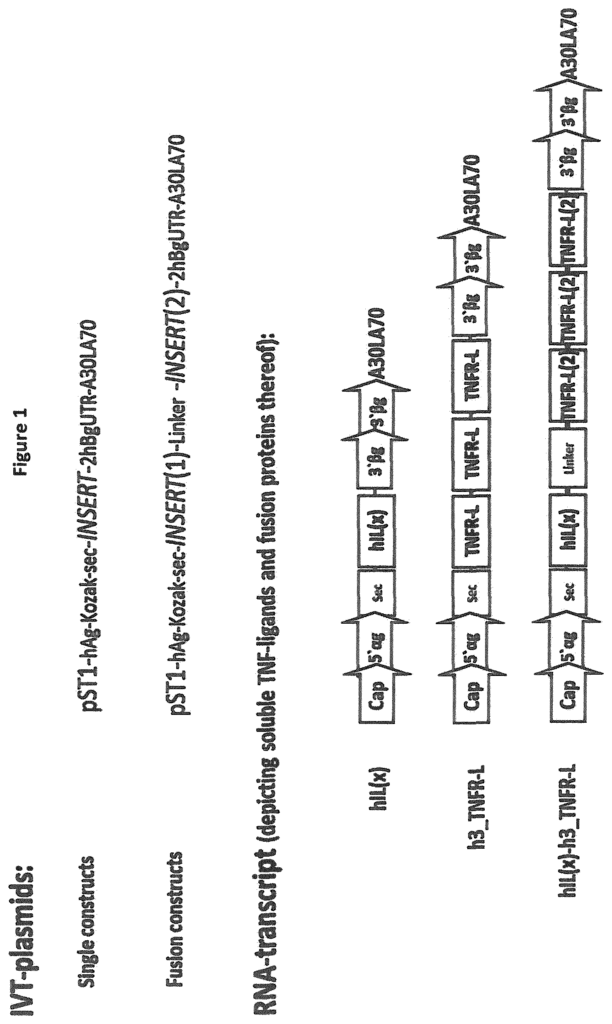
The TRON Translationale Onkologie an der Universitaetsmedizin der Johannes Gutenberg-Universitaet Mainz gGmbH, Biontech SE invention works as follows
The present invention is a cytokine-fusion protein and nucleic acids encoding these cytokine-fusion proteins. The present invention also relates to non-human organisms such as cells and pharmaceutical compositions or kits that contain the cytokine proteins or nucleic acids encoding them as well as their use as medicines.
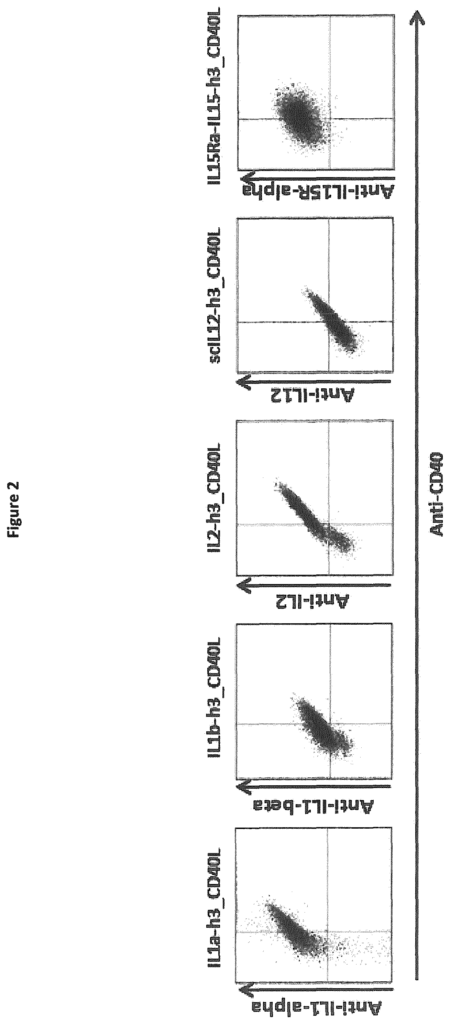
Background for RNA molecules that encode cytokine-fusion proteins and their methods of usage
Ligands in the TNF superfamily play important roles in normal developmental processes, including apoptosis and regulation of immune cells functions. They also have a role to play with cell-type-specific responses.” They play an important role in a variety of acquired and genetic disorders, such as cancer and autoimmune disease.
The TNF ligand family is characterized by an extracellular C-terminal conserved domain called TNF homology (THD). (Bodmer J. L. and al. TRENDS in Biochemical Science, 27(1), 19-26 (2002). The THDs share a nearly identical tertiary folding and show a sequence similarity between members of the family of approximately 20%. The receptor-binding THDs, which share a virtually identical tertiary fold and exhibit a sequence identity between family members of approximately 20-30%, non-covalently interlock to form (homo)trimeric complexes that are recognized by their receptors. The majority of ligands, type II transmembrane (i.e. intracellular N terminus and extracellular T-terminus), are membrane-bound. However, soluble molecules can be produced by proteolytically cleaving the extracellular domains that comprise the THD. TRENDS in Biochemical Science, 27(1), 19-26 (2002).
The term ‘interleukin’ (IL) is used to describe a group of cytokines with complex immunomodulatory functions, including cell proliferation, maturation and migration. Refers to a family of cytokines that have complex immunomodulatory properties, such as cell proliferation, maturation and migration. Interleukins are also important in the differentiation and activation of immune cells (Brocker, C. Human Genomics (2010, 5:55-55)
It was the object of this invention to provide cytokine-ligand fusion proteins that are multifunctional and, more specifically, bifunctional or dual acting. The present invention also aimed to produce nucleic acids, in particular RNA molecules encoding these cytokine-fusion proteins.
The present invention is a cytokine-fusion protein that consists of (i) a fragment, variant or extracellular domain of a tumor necrosis (TNF) superfamily ligand, and (ii), an interleukin, fragment, or variant of it, with the extracellular fragment, variant or variant of the ligand covalently attached to the interleukin, fragment, or variant of it.
In one embodiment, a cytokine-fusion protein consists of a block consisting of three extracellular domains, fragments, or variants thereof, which are covalently bound, and wherein the block, interleukin, fragment, or variant thereof, are also covalently connected.
In one embodiment, three extracellular domains, fragments, or variants of these form a homotrimer that can bind to a receptor for the ligand.
In one embodiment, the extracellular domains and/or fragments and variants of interleukin and/or block are covalently connected via peptide linksers.
In one embodiment, the cytokine fusion protein comprises a molecule/structure having the general formula\nN?-A-LA-A-LA-A-L-B?C??? (Formula I) or\nN??B-L-A-LA-A-LA-A-C??? (Formula I) ornN??B-L-A???????????????????????????????????????????????????????????????????????????????????????????
wherein L is a peptide-linker
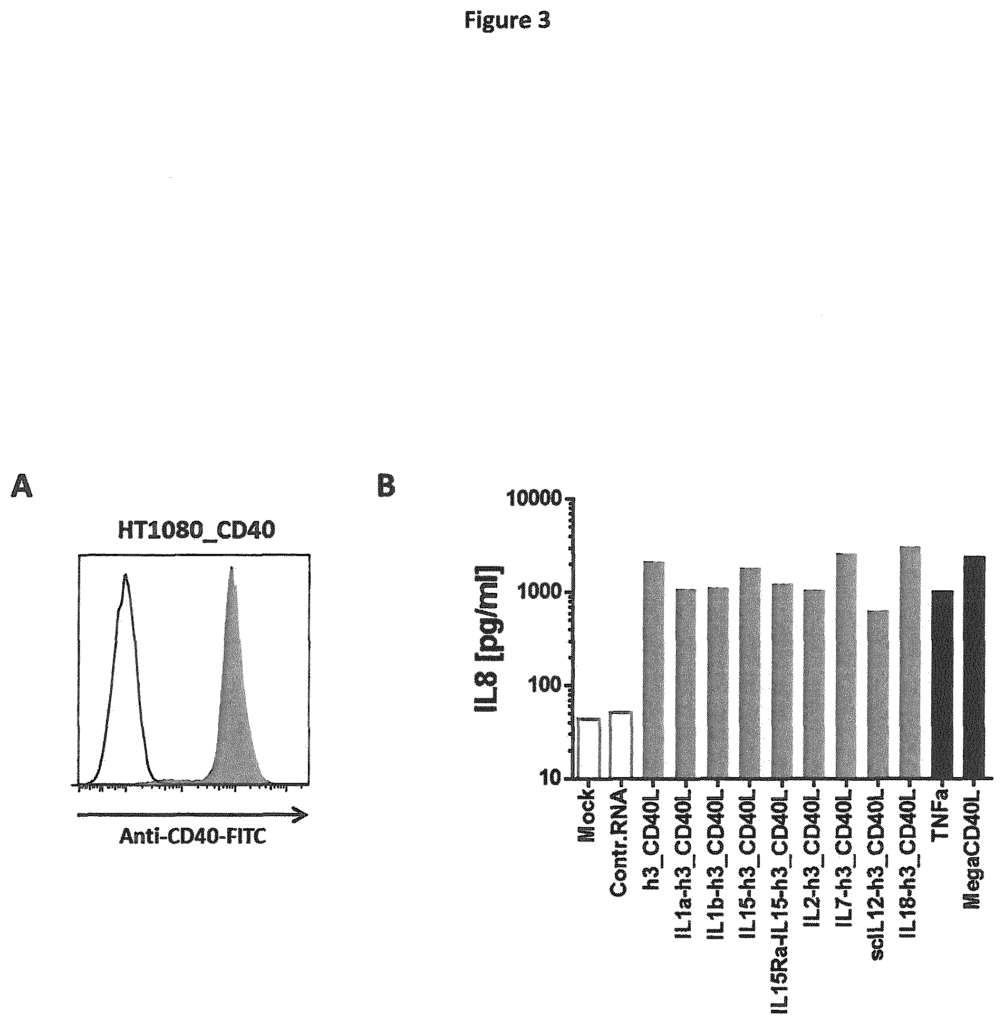
At each occurrence of LA, a covalent linker and peptide is selected independently.
In one embodiment L also comprises a domain of multimerization or dimerization that allows the cytokine-fusion protein to be multimerized, preferably dimerized.
The dimerization is achieved by selecting from the following domains: IgE Heavy-chain Domain 2 (EHD2); IgM Heavy-chain Domain 2 (MHD2); IgG Heavy-chain Domain 3 (GHD3); IgA Light-chain Domain 3 (AHD2); IgD Heavy-chain Domain 3 (DHD3); IgE and IgM Heavy-chain Dome 4 (EHD4).
In one embodiment, the multimeric, preferable dimeric complex of cytokine-fusion protein is used.
In one embodiment, a peptide is used to covalently link the extracellular domain of the ligand or fragment thereof and the fragment or variation thereof of interleukin.
In one embodiment, the cytokine fusion protein comprises a molecule/structure having the general formula:\nN?-A-L-B?C??? (Formula III) or\nN??B-L-A-C??? The formula is N??B-L-A?C???
wherein L is a peptide-linker.
In one embodiment, a cytokine-fusion protein is present in a complex trimeric form, where three extracellular domains, fragments, or variants of them of the ligand can form a homotrimer that can bind to a receptor for the ligand.
In one embodiment, in order to select the ligand, it is necessary to choose from the following group: CD40L (or CD27L), 4-1BBL (4-1BBL), OX40L (4-1BBL), APRIL (or CD30L), EDA-A1, FasL (or GITRL), LT-alpha (or TL1A), TNF-alpha(or TRAIL), RANKL and TWEAK. This group includes CD40L and CD27
In one embodiment, the CD40L extracellular region comprises or is composed of amino acids residues from 51 to 261 (or 116 to 261) of SEQ NO: 1. The CD27L extracellular region comprises or is composed of amino acids residues from 52 to 193 SEQ NO: 2. The extracellular 4-1BBL domain comprises or is composed of amino acids residues 71-254 SEQ NO: 3. And/or the OX40L extracellular area comprises or contains amino acid residuum
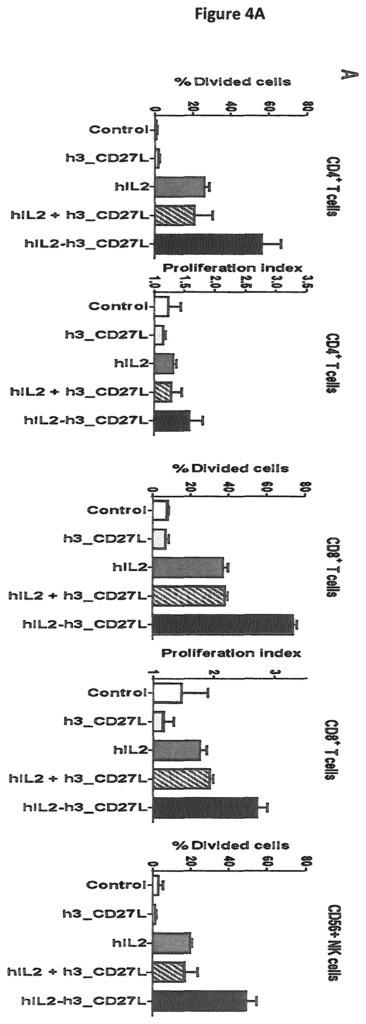
The interleukin in one embodiment is chosen from the following: IL2, IL12 IL21 IL27 IL1-alpha IL1beta IL7 IL15 IL18 IL9 IL23 IL4, IL6, IL10 IL31 and IL33

Click here to view the patent on Google Patents.
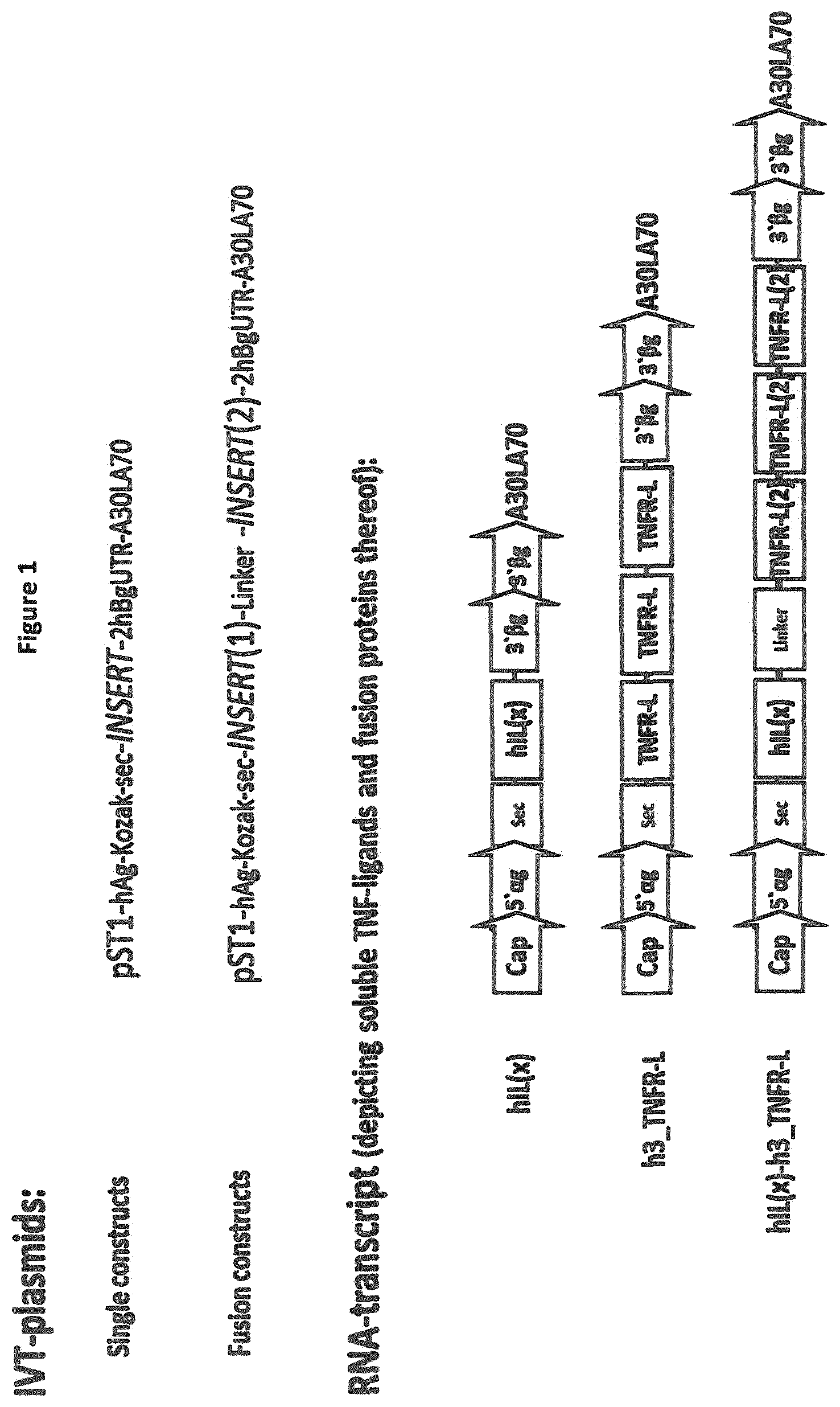
Leave a Reply